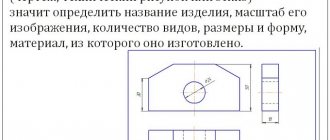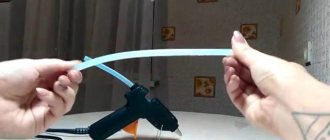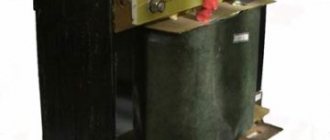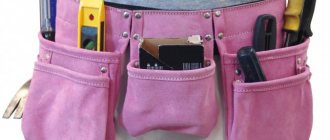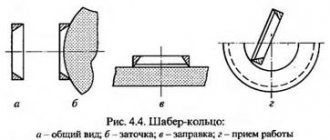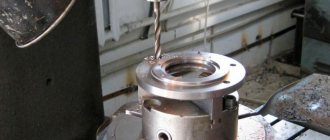Verification of a measuring instrument is a complex procedure designed to confirm the compliance of the device with the declared characteristics and metrological standards. The event is held by organizations accredited by the State Metrological Supervision. Responsibility for the timeliness of verification operations is assigned to the owner (manufacturer) of the tool.
In the material:
- Peculiarities of accreditation of verification organizations
- What instruments require verification? What is the State Register?
Peculiarities of accreditation of verification organizations
Companies providing services for calibrating measuring instruments are accredited to work with each type of product. For example, obtaining permission to verify angles with a length of 500 mm does not mean that the enterprise can work with similar products with a length of 400 or 300 mm.
After successful accreditation, the organization receives a unique verifier code. It contains a combination of letters and numbers that display the parameters of verification operations. Such codes are found in the form of seals in quality certificates.
The company is also issued an accreditation certificate with a unique registration number. The latter is included in the verification certificates issued after the provision of services and can be checked on the official website of Rosstandart.
Strings
The bow string can be considered the prototype of string instruments - one of the most important groups of any orchestra. The sound here is produced by a vibrating string. To amplify the sound, strings began to be pulled over a hollow body - this is how the lute and mandolin, cymbals, harp were born... and the guitar that we know well.
The string group is divided into two main subgroups: bowed and plucked instruments. Bowed violins include all types of violins: violins, violas, cellos and huge double basses. The sound from them is extracted with a bow, which is drawn along the stretched strings. But for plucked bows, a bow is not needed: the musician plucks the string with his fingers, causing it to vibrate. Guitar, balalaika, lute are plucked instruments. Just like the beautiful harp, which makes such gentle cooing sounds. But is the double bass a bowed or plucked instrument? Formally, it belongs to the bowed instrument, but often, especially in jazz, it is played with plucked strings.
What instruments require verification?
Instruments used in geology, geodesy, trade, military affairs, healthcare, and other industries are subject to mandatory verification and registration in Rosstandart. A complete list of products is presented in Federal Law No. 102.
Some types of instruments are not required to be verified. The operation is performed at the request of the manufacturer. As a result of voluntary verification, the product is entered into the State Register and receives an appropriate certificate.
What is the State Register?
The State Register of Measuring Instruments is represented by a digital database containing the following information:
- information about measuring instruments approved by Rosstandart;
- data on types of measuring instruments;
- registration information about single copies of devices registered in Rosstandart;
- information about testing centers that have the right to conduct verification procedures.
Main tasks of the State Register:
- collection and structuring of information about measuring instruments;
- registration and accounting of organizations conducting verification work;
- accounting for the issuance of certificates;
- providing information on standard test programs.
The State Register can be used by individuals, commercial organizations and government agencies. At the request of the interested party, the following information is provided: the purpose and name of the measuring instrument, information about the verifier, timing of verification of the measuring instrument, methodology for conducting verification procedures.
Device classification
Different fields have their own classification of devices designed to measure physical quantities.
Devices can be divided according to the following criteria:
- Transformation method: direct action, comparison, mixed transformation.
- According to the method of issuing information, they are divided into showing and recording.
- The type of output information can be represented by either an analog or digital signal.
Recording devices are divided into recording and printing types. The most progressive option is recorders, since they have higher accuracy in providing information and greater opportunities for measuring previously specified parameters.
How is verification carried out?
Verification of instruments according to GOST is carried out in accordance with the methodology prescribed in the State Register. For each type of product, certain verification procedures are provided. They take into account product configuration, measurement accuracy requirements, manufacturer recommendations and other factors.
The work is carried out by the state center for standardization and metrology or a private organization. In the second case, the company must have accreditation and supporting documents.
The actions are performed in the following order:
- the client provides the instrument to be verified to a specialized organization;
- an agreement for the provision of paid services is concluded between the customer and the contractor;
- the presented product is verified in accordance with the required methodology;
- The equipment is returned to the client and a certificate of instrument verification is issued.
If the verification is negative, the customer receives a conclusion that the device is unsuitable for further use.
Rice. 1 Certificate of verification
Which instrument is subject to verification?
An instrument that has a type approval certificate is allowed for verification. The document confirms that the device has passed state tests and has been successfully registered in the State Register.
The presence of a type approval certificate is a guarantee that the device is approved for operation on the territory of the Russian Federation and can be verified by accredited organizations within the framework of the relevant methods.
Rice. 2 Certificate of type approval of measuring instruments
Drums
The oldest musical instruments were drums. It was the tapping of rhythm that was the first prehistoric music. The sound can be produced by a stretched membrane (drum, tambourine, oriental darbuka...) or the body of the instrument itself: triangles, cymbals, gongs, castanets and other knockers and rattles. A special group consists of percussion instruments that produce a sound of a certain pitch: timpani, bells, xylophones. You can already play a melody on them. Percussion ensembles consisting only of percussion instruments stage entire concerts!
What types of verification exist?
Verification of measuring instruments is carried out within the framework of the following procedures.
- Primary verification operations. Verification of measuring equipment immediately after release. The operation is performed at a factory or in a specialized laboratory. It is allowed to carry out verification work in accordance with the standards of another state if the products are manufactured for export.
- Periodic verification. A regular operation performed according to the tool verification schedule. Products that are in operation or in storage are accepted for work. The results of the procedures are recorded in the instrument verification log.
- Extraordinary verification. Verification of a measuring instrument, performed in case of repair, mechanical damage or broken seal.
- Inspection verification operations. Verification of measuring instruments by supervisory authorities. The operation is carried out as part of control measures or other procedures related to the inspection of an enterprise (individual entrepreneur, private person).
Disagreements may arise based on the results of the inspection verification. In this case, an expert procedure is prescribed with the involvement of independent specialists. They recheck the device and issue a conclusion accepted by both parties.
When to Use Visual and Measuring Inspection
VIC is used in the manufacture of products from all materials (plastic, wood, etc.), but the strictest control is carried out for metal structures, ranging from small products to large industrial facilities (pipelines, tanks, frames, lifting mechanisms, etc.) . The variety of technical properties of metal is provided not only by combinations of chemical elements, but by processing methods. Alloys and metals are complex multicomponent compounds with great variability in physical and chemical properties and there are a large number of options for their processing. Therefore, to obtain high-quality products, you need to ensure 2 conditions:
- strict implementation of technological instructions in the manufacture of the product;
- control of raw materials, work, workpieces, technical conditions, etc. at all stages of production: from preparatory to final.
Fulfillment of the second condition is visual and measuring control. What is characteristic of this method is that it ensures the minimum possible defect rate. In products that do not have high demands on the study of the microstructure of the weld, mechanical types of joints, surfaces, visual and measurement control is the only method used. Control consists of two stages:
- Visual - using a magnifying glass, with a resolution of 2-6 times;
- Measuring - using measuring instruments (calipers, rulers, specially designed templates for specific tasks).
If necessary, then a more in-depth analysis is used, also using non-destructive testing methods, but with the help of complex, highly specialized equipment. It is used locally and most often for products that require high performance characteristics at particularly hazardous facilities. Such an examination is expensive and most effective, since it allows you to study the microstructure of the metal and identify hidden dangerous defects (especially dangerous - metal fatigue, flakes, microcracks).
But in any case, for products that belong to the category of especially dangerous objects (listed in Appendix No. 1 PB 03-372-00), and to which additional study of the metal structure using more complex methods is applicable, VIC is primary.
How does a specialist confirm verification?
Employees performing verification procedures have a verification stamp. It is a seal containing digital and alphabetic symbols. If the tests are successfully passed, the mark is placed in the verification certificate or in the product passport.
Next to the seal is the following information:
- instrument standardization parameters;
- date of verification procedures;
- verification completion date.
The full name and signature of the verifier is required.
Rice. 3 Verification marks
Holographic stickers can be used as an additional degree of protection. They are pasted into the verification certificate and contain a barcode with the main parameters of the document. Stickers can also be attached to the device at threaded connections or detachable units.
Rice. 4 Holographic sticker confirming verification
How to decipher the credential stamp?
Experts use three forms of verification stamps:
- round – for regional standardization centers;
- square - for standardization and metrology services performing periodic verifications;
- rectangular - for service specialists responsible for carrying out primary inspection activities.
A typical stamp must contain the following information:
- Gosstandart sign;
- code of the organization performing verification work;
- year of application of the mark (last two digits);
- personal designation of a specialist, represented by a Latin, Russian or Greek letter.
Stamps may contain additional information related to the month in which the work was carried out.
Rice. 5 Decoding the marks
Tasks of visual and measuring control
The work in which VIC is carried out is of a different nature. This is the production of finished products and semi-finished products (shaped, sheet metal, casting of blanks, slabs, products), assembly and installation of new structures (all types of welding), carrying out repair or strengthening operations, checking the condition during operation. But, regardless of what stage the surveys are carried out, their goal is to confirm the compliance of products, workpieces, elements with GOST, TU and other regulatory documentation:
- Detection of deformation, cracks, fistulas during operation.
- Determining the causes of defects for subsequent elimination during the manufacture of products or at the preparatory stage of installation and welding work - delamination, nicks, sunsets, cavities, hooks, end flaw (after cutting), rhombicity, caps.
- Quality check when accepting welding work - burns, non-metallic inclusions (flux, slag, tungsten), size and quality of the heat-affected zone.
- Determination of the size of defects (width, depth, permissible number per area, etc.).
- Checking geometric parameters - alignment of location, angle accuracy, gaps, offsets.
After identifying signs and eliminating problems (this could be improper operation of equipment, maintaining a technological regime), a secondary check is carried out.
Compliance with verification deadlines
When ordering verification of measuring equipment, it is worth considering the length of the procedure. It takes from 1 week to 3 months to carry out the required operations. It all depends on the complexity of the device, the workload of the calibration center, as well as the presence of current restrictions related to the epidemiological situation.
Some organizations provide services for urgent verification of measuring installations (devices). Working in this mode requires additional financial expenses.
Experts recommend that you worry about organizing verification procedures in advance. This approach will eliminate production downtime, problems with regulatory authorities and additional costs.
Purchasing a certified instrument
Our online store will help you purchase a measuring instrument with verification. We offer products with factory verification and provide services for organizing additional verification procedures. In the second case, delivery times and product costs may increase.
By taking advantage of the RINCOM offer, you receive the following benefits.
- Buying a quality measuring tool. The products sold are accompanied by certificates and passports and meet the requirements of industry standards. The products are suitable for industrial and household use.
- An impressive range of products. Customers with any needs will be able to select measuring instruments. We have bench squares, indicators, probes, protractors and other products.
- Solutions for any budget. The online store presents domestically produced goods, products from Chinese, European and American companies. You can purchase the necessary tool with moderate financial expenses.
Full-time managers provide assistance in product selection. They inform about the features of products and recommend products that meet customer requirements. To communicate with specialists, use the phone or website functionality.
